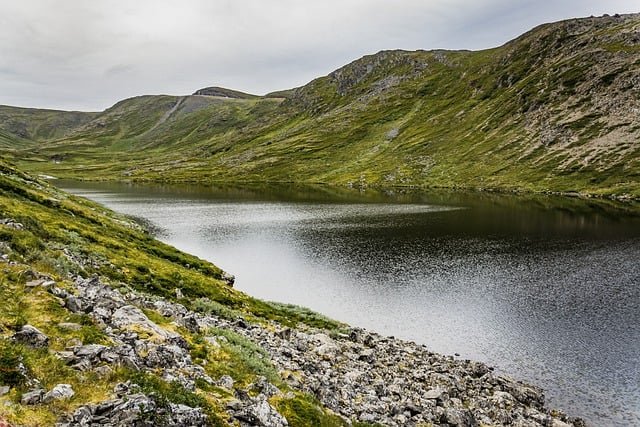It is not inherently illegal to connect a river to the ocean. Regulations vary depending on environmental laws and permits.
Connecting a river to the ocean involves significant environmental, legal, and engineering considerations. Various regulations and permits aim to protect ecosystems and water quality.
Authorities evaluate the project’s potential impact on marine life, river habitats, and communities. Legal requirements differ by region, making it essential to consult local, state, and national regulations.
In this article, you’ll explore whether connecting a river to the ocean is legal and the factors that influence this decision.
Connecting a River to the Ocean is Not a Simple Legal Matter!
National laws vary from country to country. In many places, environmental protection laws play a crucial role. These laws may require permits for altering water bodies.
A country’s water management policies can also impact decisions. For instance, some nations have strict rules to preserve natural ecosystems. Others might focus on the economic benefits of such projects.
Below is a table outlining some key national laws from different countries:
| Country | Key Law | Permit Required? |
| USA | Clean Water Act | Yes |
| Canada | Fisheries Act | Yes |
| Australia | Water Management Act | Yes |
International regulations are also important. These laws ensure that connecting a river to the ocean does not harm the environment.
For instance, the United Nations Convention on the Law of the Sea (UNCLOS) is a key regulation. This law governs all marine activities. It ensures that countries act responsibly when altering water bodies.
Another important regulation is the Ramsar Convention. This treaty focuses on wetlands. It aims to protect these areas from harmful activities.
Here are some key international regulations:
- United Nations Convention on the Law of the Sea (UNCLOS)
- Ramsar Convention on Wetlands
- Convention on Biological Diversity
Environmental Impacts
Connecting a river to the ocean can alter natural ecosystems. Freshwater and saltwater mix, changing water chemistry. This affects the plants and animals living in the water. Some species may thrive, while others may struggle to survive.
Changes in water flow can also erode riverbanks. This can lead to the loss of habitats for many species. The balance of the ecosystem is delicate and can be easily disrupted.
Wildlife living in the river or ocean may face new challenges. Fish and other animals adapted to freshwater may not survive in saltwater. This can lead to a decline in their populations.
Conversely, saltwater species may invade the river, competing with native species. This can create an imbalance, further stressing the ecosystem. Migratory patterns of fish and birds might also be disrupted.
Water Rights Issues Involved in River-to-Ocean Connections
Ownership of water resources is a crucial factor. Rivers and oceans have different owners. Rivers often fall under state or regional control. Oceans are usually managed by federal authorities. This can create conflicts.
Here is a table to show different ownership types:
| Water Body | Ownership |
| Rivers | State/Regional |
| Oceans | Federal |
Usage conflicts arise from different water needs. Farmers need water for irrigation. Cities need water for drinking and sanitation. Wildlife needs water for habitats.
- Farmers: Irrigation
- Cities: Drinking and sanitation
- Wildlife: Habitats
Connecting a river to the ocean can affect these needs. Water flow changes can impact irrigation. It can alter water quality for cities. It can disrupt wildlife habitats.
Permitting Process Involving River-to-Ocean Projects
You need to submit a detailed application!
Essential documents include environmental impact assessments, engineering plans, and public consultation records. Make sure that you provide accurate and comprehensive information.
| Document | Description |
| Environmental Impact Assessment | Analyzes potential environmental effects |
| Engineering Plans | Detailed construction and connection plans |
| Public Consultation Records | Feedback from community stakeholders |
These documents help authorities understand the project’s potential impacts. Ensure all documents are complete to avoid delays.
Getting approval can be difficult! You may face opposition from environmental groups. Regulatory bodies may have concerns about ecological impacts.
- Ecological impacts on local wildlife
- Disruption of natural water flow
- Potential for increased pollution
These challenges require thorough planning and strong evidence to overcome. Authorities may ask for revisions or additional studies.
Stakeholder Involvement
Government agencies play a critical role in this matter. They ensure environmental laws are followed. Agencies like the Environmental Protection Agency (EPA) regulate water quality. They conduct impact assessments before any project approval. These assessments check for potential harm to ecosystems. Another key player is the Army Corps of Engineers. They manage navigable waters and issue necessary permits.
Local state agencies also have jurisdiction. They enforce state-specific regulations. These can include water rights and local environmental standards. Compliance with both federal and state laws is mandatory.
Local communities have a direct stake in such projects. They rely on rivers for water, recreation, and livelihood. Changes can disrupt their daily lives and the local economy. Community input can sway decisions significantly. Public hearings often gather feedback from residents. These hearings are essential for democratic decision-making.
Economic Factors Influencing River-to-Ocean Projects
A detailed cost analysis is essential for such a major project. Costs include construction, maintenance, and environmental mitigation.
The table below outlines the potential costs involved:
| Cost Item | Estimated Amount (in USD) |
| Construction | $50 million |
| Maintenance (annually) | $5 million |
| Environmental Mitigation | $10 million |
Identifying the right funding sources is crucial. Below are common sources:
Government Grants: These are often available for large infrastructure projects.
Private Investments: Companies may invest in such projects for potential profits.
Public-Private Partnerships: Combining public and private funds can be effective.
Conclusion
Understanding the legality of connecting a river to the ocean is essential. This process involves navigating complex environmental, legal, and community issues. Thorough planning and adherence to regulations are crucial to ensure environmental protection and project success.
By considering all factors—legal requirements, environmental impacts, and community concerns—you can make informed decisions.


